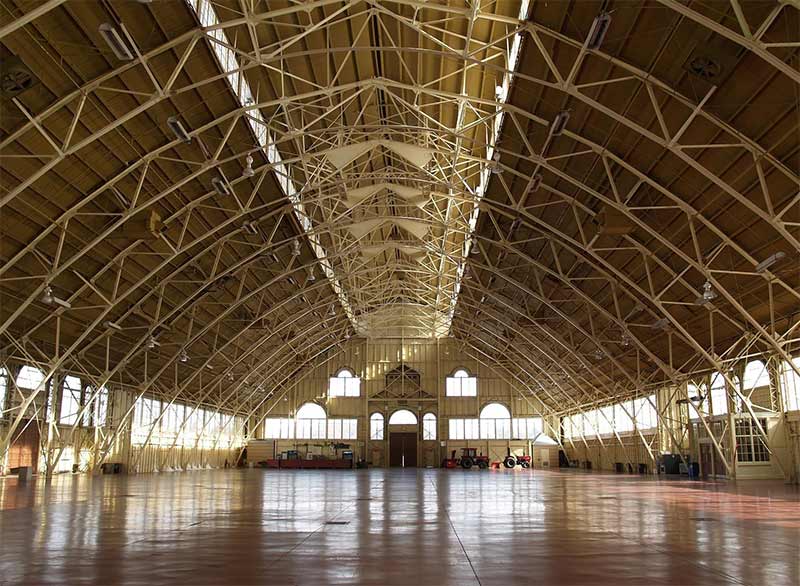How Best to Heat Large Rooms
Baby, it's cold outside! There's nothing worse than pumping out heat into a room only to realise although it's warming your chilly toes, it's simultaneously emptying your pockets. With the drop in temperatures and the energy crisis woes hitting us with a vengeance, we all need to start thinking about how to be clever and cost-effective when it comes to staying warm.
If you have a large space that needs heating, such as an office, warehouse or expansive workstation, staying warm is not only good for your health, but it's also a massive boost to productivity and positivity.
Nobody likes to be an icicle when trying to get those all-important work deadlines done! Absenteeism because of colds and flu, which spike during colder weather, is a massive drain on the economy. It's also becoming increasingly critical to keep in mind sustainability and the impact on the environment our heating practices are having.
Let's take on a "heated" topic and explore how to make the most of your heating in a bigger space and why it's vital for your wellness and productivity.

Stay warm, stay healthy
It goes without saying that staying warm at work is important for maintaining overall health and boosting your immune system. Not only do you want to experience a sense of optimised well-being and remain comfortable while performing your job, but a cold environment can contribute to a variety of health conditions, such as high blood pressure and even heart attacks and pneumonia. It can also mean loss of sleep, social isolation, stress, and, in severe cases, mental illness.
People with existing health conditions such as circulatory or respiratory problems (e.g. asthma), arthritis, diabetes, anxiety and depression are especially vulnerable to the cold.
The economic impact
Humans aren't robots. We're susceptible to icky germs and bugs and if we're under the weather, we can't work or attend to our regular day-to-day responsibilities. One only needs to have witnessed the impact that Covid 19 has taken on the workforce. Businesses are understaffed, supply chains are affected, deliveries can’t go out, and all forms of industry and enterprise have been impacted.
Acute conditions, specifically colds, can cause significant health-related productivity losses because of their high occurrence in working-age groups.
In a study published by the National Library of Medicine, conducted in the USA, "each cold experienced by a working adult resulted in an average of 8.7 lost work hours (2.8 absenteeism hours; 5.9 hours of on-the-job loss), and 1.2 work hours were lost due to having to attend to children under the age of 13 who were suffering from colds. The economic cost of lost productivity due to the common cold is around $25 billion, of which $16.6 billion is attributed to on-the-job productivity loss, $8 billion is due to absenteeism, and $230 million is because of caregiver absenteeism". Those are some alarming stats!
The challenge of heating a large space
Heating a large space, such as a warehouse or a commercial building, can be challenging. One of the main stumbling blocks is the sheer size of the space, which can make it tricky to heat it evenly and efficiently.
The priority in complex, large-scale environments is to ensure comfort for occupants while maximising production capability. Vital considerations such as size, height, the logistical challenge of various mezzanines, and heat gain control must be taken into account.
What options are available for heating large spaces?
From an industrial fan heater to an oil-filled radiator, an entire spectrum of heating solutions is available to heat large workspaces such as open-plan offices and warehouses to keep your workforce toasty when temperatures take a dip outside.
There are several low-carbon-producing and cost-effective solutions to keep your large space heated efficiently and effectively. It all depends on the size of the space and whether you require something free-standing and mobile or a built-in unit. Many of these have the added benefit of being dual temperature adjustable, so they can warm the ambient temperature when it's cold but also cool the temperature in hot conditions.
Be size savvy and layout sensible
Bear in mind that finding the best way to heat a large space depends on several factors, including the general layout and overall size of the area you intend to heat.
The budget you have available also plays a significant role - especially in light of recent increases. Read about the soaring UK prices in this article and even a few dubious but fascinating heating hacks.
Types of space heater
Space heaters come in different sizes, types and shapes and use differing heating techniques and technology. The standard heating technologies are fan, convection, and radiant.
Benefits of fan heaters
- affordability
- safe to use
- portability
- effectively warm the air
- fan and heater combination
- convenient to use
- great for large areas
- zonal heating
Benefits of convection heaters
- evenly distribute heat throughout the room
- very quiet
- space-saving as it's possible to install them on the wall
- convection heaters will heat an area much faster than radiant heaters
- the safest type of electric heater
- heat an entire room instead of a particular area
Benefits of radiant heaters
- energy-efficient
- quiet
- allergy-friendly
- consistent temperature
- create less arid conditions
- flexible fuelling
- scalable
- aesthetically pleasing
- no need for duct-work
- floor covering options
- warm floors for warm feet
Once the ideal temperature is reached, space heaters can maintain that temperature for as long as you require. This saves you a fair amount of electricity, and no energy is wasted.
One big plus is they take less time to distribute the heat and warm the room compared to central heating, which takes quite some time to reach the set temperature. Depending on the type of heater you select, you'll feel the warmth within a few minutes. For an instant hit of hot air, try a convector heater. It's ideal for use at home, in offices and in other professional environments. Central heating systems are efficient in the long run, the initial outlay of installing them can be costly.
Space heaters don't require complex mechanics to provide heat which is why they're more durable and affordable. A super handy multi-function air treatment unit has the added benefit of being mounted on castors for manoeuvrability – meaning you can move it around your workspace accordingly. And if a space heater breaks down, a simple repair can quickly bring it back to working order.
Portable and popular
One feature that puts space heaters in such high demand when the temperatures plummet is that most are lightweight - meaning you can move them around from room to room and heat the area. This is perfect for offices and workstations where some folk prefer near tropical balminess, while others get too hot under the collar!
Keep in mind different types of space heaters use different heating technologies. Some provide even whole-room heating, while others deliver quick spot heating in small spaces. There are those designed with an internal fan that blows air across a heating element. For the most effective performance, do your homework and select the right type of space heater to suit your requirements and application.
Lastly, don't forget it's vitally important to ensure that your space is well-insulated to prevent heat from escaping. Also, go for energy-efficient heating systems to minimise costs. It can even be beneficial to use a combination of heating methods to create a more comfortable and uniformly heated space.
For advice and suggestions on how to make your workplace warm and welcoming, contact the friendly and helpful team at ESE Direct today.

Author Bio - Debs
Digital marketer, social media, content writer, musician, sloth-lover, tea-drinker.





